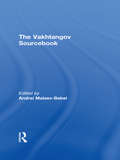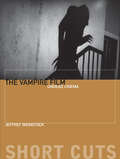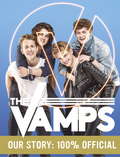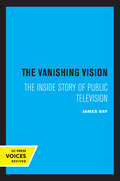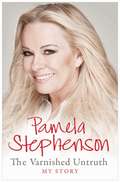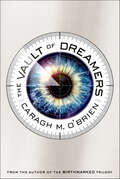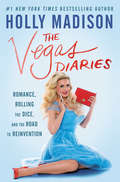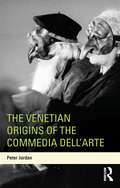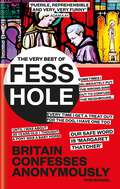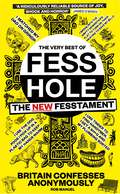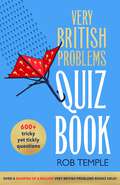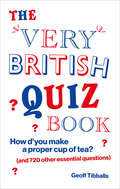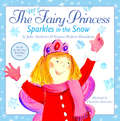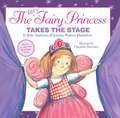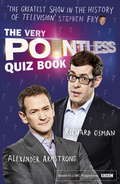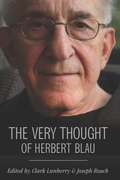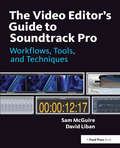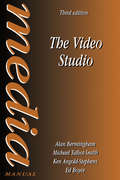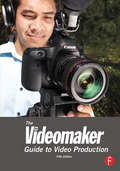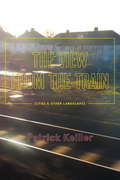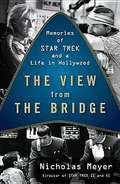- Table View
- List View
The Vakhtangov Sourcebook
by Andrei Malaev-Babel‘Scrupulously compiled and skillfully translated by Andrei Malaev-Babel, The Vakhtangov Sourcebook ... provides the most comprehensive addition to English readers’ knowledge of the philosophy, pedagogy, and legacy of Vakhtangov.’ – Modern Language Review 'An exceptionally valuable book that promises to be the definitive reference for Vakhtangov's work for years to come.' – Theatre Topics Yevgeny Vakhtangov was the creator of Fantastic Realism, credited with reconciling Meyerhold’s bold experiments with Stanislavski’s naturalist technique. The Vakhtangov Sourcebook compiles new translations of his key writings on the art of theatre, making it the primary source of first hand material on this master of theatre in the English speaking world. Vakhtangov’s essays and articles are accompanied by: Diary and Notebook excerpts His lectures to the Vakhtangov Studio In-depth accounts of Vakhtangov methods in rehearsal Production photographs and sketches Extensive bibliographies Director’s notes on key performances An extensive introductory overview from editor Andrei Malaev-Babel explains Vakhtangov‘s creative life, his groundbreaking theatrical concepts and influential directorial works.
The Vampire Film
by Jeffrey WeinstockThis introductory volume offers an elegant analysis of the enduring appeal of the cinematic vampire. From Georges Méliès' early cinematic experiments to Twilight and Let the Right One In, the history of vampires in cinema can be organised by a handful of governing principles that help make sense of this movie monster's remarkable fecundity. Among these principles are that the cinematic vampire is invariably about sex and the vexed human relationship with technology, and that the vampire is always an overdetermined body condensing what a culture considers other. This volume includes in-depth studies of films including Powell's A Fool There Was, Franco's Vampyros Lesbos, Cronenberg's Rabid, Kümel's Daughters of Darkness, and Merhige's Shadow of the Vampire.
The Vampire Film: Undead Cinema (Short Cuts)
by Jeffrey WeinstockThis introductory volume offers an elegant analysis of the enduring appeal of the cinematic vampire. From Georges Méliès' early cinematic experiments to Twilight and Let the Right One In, the history of vampires in cinema can be organised by a handful of governing principles that help make sense of this movie monster's remarkable fecundity. Among these principles are that the cinematic vampire is invariably about sex and the vexed human relationship with technology, and that the vampire is always an overdetermined body condensing what a culture considers other. This volume includes in-depth studies of films including Powell's A Fool There Was, Franco's Vampyros Lesbos, Cronenberg's Rabid, Kümel's Daughters of Darkness, and Merhige's Shadow of the Vampire.
The Vamps: 100% Official
by The VampsSince forming on YouTube in 2012, The Vamps have become one of the biggest bands in the UK. They have travelled the world with massive arena tours, sold hundreds of thousands of records, and gained legions of amazing and devoted fans. They have gone from schoolboys to superstardom in just a few years, and for the first time Connor, Brad, Tristan and James tell their story. From life on the road to dealing with their new-found fame, nothing is off-limits.Featuring exclusive behind-the-scenes photography, this is a fully-illustrated joint autobiography: the perfect book for any Vamps fan.
The Vamps: 100% Official
by The VampsSince forming on YouTube in 2012, The Vamps have become one of the biggest bands in the UK. They have travelled the world with massive arena tours, sold hundreds of thousands of records, and gained legions of amazing and devoted fans. They have gone from schoolboys to superstardom in just a few years, and for the first time Connor, Brad, Tristan and James tell their story. From life on the road to dealing with their new-found fame, nothing is off-limits.Featuring exclusive behind-the-scenes photography, this is a fully-illustrated joint autobiography: the perfect book for any Vamps fan.
The Vanishing Vision: The Inside Story of Public Television
by James DayThis spirited history of public television offers an insider's account of its topsy-turvy forty-year odyssey. James Day, a founder of San Francisco's KQED and a past president of New York's WNET, provides a vivid and often amusing behind-the-screens history. Day tells how a program producer, desperate to locate a family willing to live with television cameras for seven months, borrowed a dime—and a suggestion—from a blind date and telephoned the Louds of Santa Barbara. The result was the mesmerizing twelve-hour documentary An American Family. Day relates how Big Bird and his friends were created to spice up Sesame Street when test runs showed a flagging interest in the program's "live-action" segments. And he describes how Frieda Hennock, the first woman appointed to the FCC, overpowered the resistance of her male colleagues to lay the foundation for public television. Day identifies the particular forces that have shaped public television and produced a Byzantine bureaucracy kept on a leash by an untrusting Congress, with a fragmented leadership that lacks a clearly defined mission in today's multimedia environment. Day calls for a bold rethinking of public television's mission, advocating a system that is adequately funded, independent of government, and capable of countering commercial television's "lowest-common-denominator" approach with a full range of substantive programs, comedy as well as culture, entertainment as well as information. This title is part of UC Press's Voices Revived program, which commemorates University of California Press’s mission to seek out and cultivate the brightest minds and give them voice, reach, and impact. Drawing on a backlist dating to 1893, Voices Revived makes high-quality, peer-reviewed scholarship accessible once again using print-on-demand technology. This title was originally published in 1995.
The Varnished Untruth
by Pamela StephensonAlong with my own personal story, I am going to write down a few things that may amuse you (or even take you down some other emotional path) and I'll let you in on a few so-far-unrevealed aspects of my life. I'll try to leave out the boring bits. Don't be thinking this is easy for me. I'm darn good at getting under other people's skin, but opening up about my own life is quite a different matter. So how shall I portray myself? There are choices, you know: Wife, mother, psychologist, writer, comedian, actor, dancer, diver, gypsy, dreamer, rich girl, poor girl, beggar girl, thief. I am all of those and more. Tell you what, you decide. You decide exactly what I am...A complicated childhood in Australia, a bold move to London, being a woman in a man's world on Not the Nine O'Clock News, becoming Mrs Billy Connolly, motherhood, career changes and then Strictly Come Dancing - told in her own inimitable style, The Varnished Untruth is Pamela Stephenson's own story.
The Vault of Dreamers (The Vault of Dreamers Trilogy #1)
by Caragh M. O'BrienThe Forge School is the most prestigious arts school in the country. The secret to its success: every moment of the students' lives is televised as part of the insanely popular Forge Show, and the students' schedule includes twelve hours of induced sleep meant to enhance creativity. But when first year student Rosie Sinclair skips her sleeping pill, she discovers there is something off about Forge. In fact, she suspects that there are sinister things going on deep below the reaches of the cameras in the school. What's worse is, she starts to notice that the ridges of her consciousness do not feel quite right. And soon, she unearths the ghastly secret that the Forge School is hiding—and what it truly means to dream there. From Caragh M. O'Brien, author of the Birthmarked trilogy comes the first book in a new series, The Vault of Dreamers, a fast-paced, psychologically thrilling novel about what happens when your dreams are not your own.
The Vegas Diaries: Romance, Rolling the Dice, and the Road to Reinvention
by Holly MadisonThe #1 New York Times bestselling author returns with this candid, humorous, and captivating memoir chronicling her journey toward reinvention and self-acceptance.When you've come out the other side of the bizarre, twisted world of the Playboy mansion, where do you land? If you're Holly Madison . . . there's no place like Las Vegas!After making the sudden decision to reclaim her life, Holly broke free from the sheltered, deceptive confines of the mansion (which meant exiting a hit television show) and was determined to start her life over . . . from scratch. Without the security of a job or relationship, she set out to reinvent herself on no one's terms but her own.Deciding to roll the dice and begin again in the glamorous and dreamlike city of Las Vegas, Holly quickly realized that while she may have left her past in the rearview mirror, the labels and stereotypes that came from it weren't so quick to leave her. With a fierce commitment to take charge of her own narrative, Holly dives headfirst into a journey of self-discovery. After a whirlwind stint on Dancing with the Stars, she snags the coveted lead role in the Strip's hottest new burlesque spectacular and lands a reality series spotlighting her new life as a single woman. If her own television show and dream job as a showgirl weren't enough to keep her busy, Holly explores the decadent, exclusive inner-world of Sin City, navigating it's social and dating scene with humor and heart. When it comes to romance, she is met with an eclectic cast of characters, from fame hounds to long distance loves to the occasional celebrity and more than one tabloid mishap. In this reflective, heartwarming memoir, Holly learns that each dating disaster holds an important, and in some cases difficult to face, lesson about herself.The Vegas Diaries is a comedy of errors, set against the glitz and glamour of the dazzling Vegas strip. Through the wild and crazy experiences on one young woman's quest to "have it all," Holly faces her fears, anxieties, and insecurities to discover that her journey to self-sufficiency is also her path to healing. Letting go of trying to prove herself to others, Holly finally gains the courage to confront her past-and in the process finds the life and love she deserves.
The Venetian Origins of the Commedia dell'Arte
by Peter JordanThe Venetian Origins of the Commedia dell'Arte is a striking new enquiry into the late-Renaissance stirrings of professional secular comedy in Venice, and their connection to the development of what came to be known as the Commedia dell’Arte. The book contends that through a symbiotic collaboration between patrician amateurs and plebeian professionals, innovative forms of comedy developed in the Venice region, fusing ‘high’ and ‘low’ culture in a provocative mix that had a truly mass appeal. Rich with anecdotes, diary entries and literary – often ribald – comic passages, Peter Jordan's central argument has important implications for the study of Venetian art, popular theatre and European cultural history.
The Very Best of Fesshole: Britain confesses anonymously
by Rob Manuel'Puerile, reprehensible and very, very funny' Adam Kay'I love Fesshole. Every single one is a masterclass in storytelling' Jay Rayner'Hilarious! The only guide any alien would need to find out what humans are really like' David Schneider'The wild, the wonderful, the frankly unbelievable and the downright disgusting. Under the anonymity of the internet people confess their most embarrassing secrets and it might not be good for their souls, but it's great for the readers!' Richard K Herring It's confession time, folks! Things have been building up inside of you for too long. Secrets you thought you'd never share with another soul are bubbling to the surface begging for release.And where better to let it all out (/laugh at someone else's misfortune) than on the internet.Fesshole is a Twitter account (@fesshole) which allows people to anonymously confess their innermost thoughts, deepest, darkest secrets, and their most outrageously funny faux pas - but will the online world absolve you of your sins?This book contains the greatest confessions to date, and a whole heap of new ones.After all, if you can't confide in strangers on the internet, who can you tell?
The Very Best of Fesshole: The New Fesstament
by Rob Manuel'A ridiculously reliable source of joy, shock and horror' - James O'Brien 'I sometimes read one of those fesses and wonder if I submitted it myself the night before, after a few beers' - James May The anonymous voices of the internet are back, ready to spill their deepest, darkest secrets and side-splitting faux pas.In this eagerly anticipated second coming, Rob Manuel has once again compiled the most jaw-dropping, knee-slapping, and cringe-inducing confessions out there.Prepare to immerse yourself in the seedy underbelly of human nature, where no secret is too taboo, no embarrassment is left unexplored, and laughter knows no bounds. Once again, the online world becomes an unexpected arena of collective catharsis, and this riotous read is an addictive deep dive into our shared guilt.This must have book contains favourite viral confessions, and a whole heap of new ones. After all, if you can't confide in strangers on the internet, who can you tell?
The Very British Problems Quiz Book
by Rob TempleWhat does 'custard and jelly' mean in cockney rhyming slang?Which biscuit has half of its name on top of the cooker and the other half on the door?And 25 million of what drink are served by British Airways each year?We Brits can't get enough of a quiz. Stumped for office party chit-chat? Quiz. Midweek visit to the pub? Quiz. Stuck inside in pyjamas on a rainy night and in the mood to cause a big family argument? You got it - quiz.This book is correspondingly filled with questions on all things wonderfully and unequivocally British - you'll find all sorts of tickly teasers, complex conundrums, worrisome word searches and much more on topics ranging from our iconic weather to types of cake. Best enjoyed with a cup of tea and your favourite biscuit(s).***ANSWERS: Telly, Hobnob, buy the book and find out!***Praise for Very British Problems'Had us guffawing into our Earl Grey tea' Bella'My favourite twitter account at the moment is Very British Problems (@soverybritish) . . . it makes me laugh out loud' Tom Hiddleston'Hilarious' Daily Express'Temple pays affectionate and comic homage to the sheer quirkiness of being British' Good Book Guide
The Very British Problems Quiz Book
by Rob TempleWhat does 'custard and jelly' mean in cockney rhyming slang?Which biscuit has half of its name on top of the cooker and the other half on the door?And 25 million of what drink are served by British Airways each year?We Brits can't get enough of a quiz. Stumped for office party chit-chat? Quiz. Midweek visit to the pub? Quiz. Stuck inside in pyjamas on a rainy night and in the mood to cause a big family argument? You got it - quiz.This book is correspondingly filled with questions on all things wonderfully and unequivocally British - you'll find all sorts of tickly teasers, complex conundrums, worrisome word searches and much more on topics ranging from our iconic weather to types of cake. Best enjoyed with a cup of tea and your favourite biscuit(s).***ANSWERS: Telly, Hobnob, buy the book and find out!***Praise for Very British Problems'Had us guffawing into our Earl Grey tea' Bella'My favourite twitter account at the moment is Very British Problems (@soverybritish) . . . it makes me laugh out loud' Tom Hiddleston'Hilarious' Daily Express'Temple pays affectionate and comic homage to the sheer quirkiness of being British' Good Book Guide
The Very British Quiz Book: How d’you make a proper cup of tea? (and 720 other essential questions)
by Geoff TibballsWill you be flummoxed by this Great British distraction?Do you know queuing etiquette? Twenty-one different ways to describe rain? Then this quiz book might be just your cup of tea.Politely challenge yourself, your family and your friends with questions on British culture, language, etiquette, of course, the weather, as well as lots of other essential, quintessential British subjects. Each quiz comprises 21 questions and answers are based on the real results from national surveys and polls. Hours of brain-bamboozling fun for all the family!
The Very Fairy Princess Sparkles in the Snow
by Julie Andrews Emma Walton Hamilton Christine DavenierThe Winter Wonderland Festival is just around the corner, and Gerry knows this is her moment to SHINE. She's the most enthusiastic singer around, so she's certain her music teacher will choose her to perform the solo. She takes every opportunity to show him her VERY best voice-during rehearsal, during lunchtime, and even during recess. When a professional singer is given the solo instead, Gerry is crushed...but as the snow begins to fall, she finds a way to get her SPARKLE back! The mother-daughter team of Julie Andrews and Emma Walton Hamilton adds a sparkly seasonal story to their #1 New York Times bestselling series.
The Very Fairy Princess Takes the Stage
by Julie Andrews Emma Walton HamiltonEveryone's favorite fairy princess is back and just in time for her ballet recital in this new picture book addition to the Julie Andrews Collection. At first, when Gerry is cast as the Court Jester and not the Crystal Princess, she is dismayed -- nothing is pink and no one can see her crown under her silly jester hat! But just as the recital looks like it's headed for disaster, our ever-energetic very fairy princess swoops in to save the day!Gerry's sparkle radiates from the page once more through Christine Davenier's whimsically elegant illustrations in this spirited, ballet-themed follow-up to The Very Fairy Princess from the renowned mother-daughter team of Julie Andrews and Emma Walton Hamilton.
The Very Pointless Quiz Book: Prove your Pointless Credentials
by Alexander Armstrong Richard OsmanLet hosts Alexander Armstrong and Richard Osman guide you through the quiz rounds with their trademark warmth and humour and battle it out against your friends and family for Pointless glory. Perfect for playing along alone or with family and friends, The Very Pointless Quiz Book will test your knowledge and tease your brains.So how good are you at Pointless? Really? Do you think you've got enough in-depth knowledge of Regional Railways, African Countries With No Coastline and Types of Lettuce to carry off the coveted Pointless trophy?Well let's see shall we?Here's your chance to step up to the podium (metaphorically speaking of course, chances are you'll be sitting somewhere very comfortably with either a mug of tea or a roll of Andrex within easy reach) put that knowledge to the test, and see just how far you can go in a genuine four-round Pointless ordeal.Right, if everyone's ready, let's play Pointless...
The Very Pointless Quiz Book: Prove your Pointless Credentials (Pointless Books #3)
by Alexander Armstrong Richard OsmanLet hosts Alexander Armstrong and Richard Osman guide you through the quiz rounds with their trademark warmth and humour and battle it out against your friends and family for Pointless glory. Perfect for playing along alone or with family and friends, The Very Pointless Quiz Book will test your knowledge and tease your brains.So how good are you at Pointless? Really? Do you think you've got enough in-depth knowledge of Regional Railways, African Countries With No Coastline and Types of Lettuce to carry off the coveted Pointless trophy?Well let's see shall we?Here's your chance to step up to the podium (metaphorically speaking of course, chances are you'll be sitting somewhere very comfortably with either a mug of tea or a roll of Andrex within easy reach) put that knowledge to the test, and see just how far you can go in a genuine four-round Pointless ordeal.Right, if everyone's ready, let's play Pointless...
The Very Thought of Herbert Blau
by Joseph Roach Clark LunberryHerbert Blau (1926–2013) was the most influential theater theorist, practitioner, and educator of his generation. He was the leading American interpreter of the works of Samuel Beckett and as a director was instrumental in introducing works of the European avant-garde to American audiences. He was also one of the most far-reaching and thoughtful American theorists of theater and performance, and author of influential books such as The Dubious Spectacle, The Audience, and Take Up the Bodies: Theater at the Vanishing Point. In The Very Thought of Herbert Blau, distinguished artists and scholars offer reflections on what made Blau's contributions so visionary, transformative, and unforgettable, and why his ideas endure in both seminar rooms and studios. The contributors, including Lee Breuer, Sue-Ellen Case, Gautam Dasgupta, Elin Diamond, S. E. Gontarski, Linda Gregerson, Martin Harries, Bill Irwin, Julia Jarcho, Anthony Kubiak, Daniel Listoe, Clark Lunberry, Bonnie Marranca, Peggy Phelan, Joseph Roach, Richard Schechner, Morton Subotnick, Julie Taymor, and Gregory Whitehead, respond to Blau's fierce and polymorphous intellect, his relentless drive and determination, and his audacity, his authority, to think, as he frequently insisted, "at the very nerve ends of thought."
The Video Editor's Guide to Soundtrack Pro: Workflows, Tools, and Techniques
by Paul Lee Sam McGuireThis book tells you how, why, and when you should perform certain audio postproduction tasks within Soundtrack Pro 3 while editing your video in the Final Cut Studio suite. Intertwining video editing workflows with audio editing workflows for video editors using Final Cut Studio 3, it also describes in-depth the audio postproduction process as well as the specific tools used for editing and mixing audio within Soundtrack Pro 3. The final section is designed as an audio postproduction "cook-book", describing typical audio post scenarios with detailed workflows for dealing with them.The book provides real-world workflows and step-by-step instruction on the basics of audio editing in STP3, implementing sound effects, spectral tools and much more. Also included is a DVD containing both video and audio files, demonstrating surround sound, mixing procedures, and other audio editing processes. Included as well are project files with which you can refine techniques learned in the book. The DVD is not included with the E-book. Please contact the publisher for access to the DVD content by emailing d.mcgonagle@elsevier.com.
The Video Studio
by Alan Bermingham Michael Talbot-Smith Ed Boyce Ken Angold-StephensThe recent demise of the independent television companies and the expansion of satellite and cable networks has led to an explosion in small, independent production facilities. In parallel with this development has been a steady increase in media training and a major expansion in corporate video facilities. The Video Studio is written for everyone contemplating setting-up a professional installation, whether studio or location based. The Video Studio shows how to estimate the scale of investment required and, depending on the nature and frequency of use of the facility, the layout of technical areas and the function of the main items of equipment is described in easy to understand language. In short this is a nuts and bolts approach to planning and operating a studio of 150 square metres or less. Completely updated to take account of all the recent technological advances which have taken place, the book now covers: DAT, timecode, digital compression, non-linear editing and all current digital video formats.
The Videomaker Guide to Video Production
by VideomakerFrom the editors of Videomaker Magazine comes this new edition that you have been waiting for. The Videomaker Guide Digital Video, fourth edition, provides information on all of the latest cutting edge tools and techniques necessary to help you shoot and edit video like the pro's. Learn about equipment, lighting, editing, audio, high definition, and all aspects of video from the leading experts on videography!
The View From The Train
by Patrick Keiller"Robinson believed that, if he looked at it hard enough, he could cause the surface of the city to reveal to him the molecular basis of historical events, and in this way he hoped to see into the future." In his sequence of films, Patrick Keiller retraces the hidden story of the places where we live, the cities and landscapes of our everyday lives. Now, in this brilliant collection of essays, he offers a new perspective on how Britain works and sees itself. He discusses the background to his work and its development - from surrealism to post-2008 economic catastrophe - and expands on what the films reveal. Referencing writers including Benjamin and Lefebvre, the essays follow his career since the late 1970s, exploring themes including the surrealist perception of the city; the relationship of architecture and film; how cities change over time, and how films represent this; as well as accounts of cross-country journeys involving historical figures, unexpected ideas and an urgent portrait of post-crash Britain.From the Hardcover edition.
The View From the Bridge: Memories of Star Trek and a Life in Hollywood
by Nicholas MeyerThe critically acclaimed director and writer shares his account of the making of the three classic Star Trek filmsThe View from the Bridge is Nicholas Meyer's enormously entertaining account of his involvement with the Star Trek films: STII: The Wrath of Khan, STIV: The Voyage Home, and STVI: The Undiscovered Country, as well as his illustrious career in the movie business. The man best known for bringing together Sherlock Holmes and Sigmund Freud in The Seven Per-Cent Solution had ironically never been interested in Star Trek until he was brought on board to save the film series. Meyer shares how he created the script for The Wrath of Khan, the most revered Star Trek film of all, in twelve days-only to have William Shatner proclaim he hated it. He reveals the death threats he received when word got out that Spock would be killed, and finally answers the long-pondered question of whether Khan's chiseled chest is truly that of Ricardo Montalban. Meyer's reminiscences on everyone from Gene Roddenberry to Laurence Olivier will appeal not only to the countless legions of Trekkies, but to anyone fascinated by the inner workings of Hollywood.
